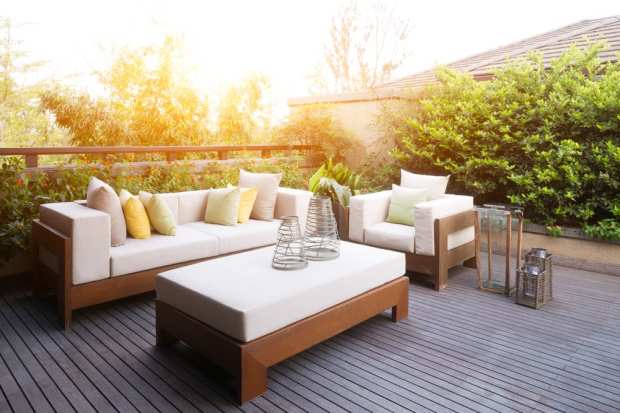DTC Brands Fill Pricing Gap In Outdoor Furniture Market

Some of the minds behind direct-to-consumer (DTC) brands are inspired by their personal experiences. Yardbird Co-founder Jay Dillon, for instance, was shopping for furniture with his then-girlfriend, now wife, at big-box stores. “The designs weren’t that impressive, and the quality wasn’t great,” Dillon told PYMNTS in an interview. Higher-end retailers, however, were charging $4,000 to $5,000 for a set of outdoor furniture. Aside from the cost of the products, delivery time was four to six weeks on average. “We just thought there was a lot of opportunity in the industry,” Dillon said.
Yardbird’s concept, which has grown into a brand with an eCommerce website and a showroom in Minnesota, offers 10 furniture collections. The company sells its furniture in sets, although it does sell individual chairs. Its Langdon Outdoor Sofa Set, for instance, comes with a sofa, swivel chairs and a coffee table. The site allows consumers to shop by collections or by product type. Most consumers request a fabric or metal swatch. Once they decide to purchase a product, Yardbird seeks to make the process as simple as possible.
When it comes to delivery and logistics, the company ships its products less-than-truckload (LTL) in under seven business days, and it usually takes two to three days to reach consumers around the country. Yardbird always provides white-glove deliveries in Minnesota, while customers in other locations have to request the offering. For payments, the company uses Shopify and accepts credit cards, with plans to offer financing in the future.
Design Consultations
Consumers looking for guidance on their purchases can request a design consultation through an online form. Dillon said the form is kept “intentionally brief,” requesting only a name, contact information, any notes the consumer wants to share, a photo and dimensions of the space they want to furnish.
Yardbird has two designers on staff to assist with the design process. “They’ll make recommendations and work with the consumer,” Dillon noted. In another effort to help shoppers with purchasing decisions, the company asks customers to send photos of the furniture sets they have purchased. As a result, Dillon said, the company has a “good catalog of our sets in the wild,” which they use to show their furniture in a less contrived way than a professional photo shoot.
The Showroom Experience
To give consumers an idea of how the furniture would look in real life, the company has a showroom in Minnesota. “It’s very minimalist,” Dillon said. The space, which is about 3,500 square feet, has concrete floors and white walls. It is set up with 10 furniture sets placed on rugs, with throw pillows adding pops of color. Consumers can browse the space or can interact with representatives.
Consumers can choose to buy furniture on the spot in the store and have it shipped to them, but if they want some time to measure their spaces, they can buy a product at a later time. The Shopify payments technology allows Yardbird to send a quote to prospective customers, which allows them to “click on the quote and then check out,” Dillon said.
The Road Ahead
Beyond Yardbird, Outer aims to tap into the direct-to-consumer (D2C) model to deliver quality sofas to mainstream consumers. Like Yardbird, the company aims to provide consumers with examples of how its furniture is actually used. Outer has neighborhood showrooms hosted by its customers to let shoppers experience its products in real life.
From Outer to Yardbird, DTC brands are tapping into eCommerce and the power of their existing customer bases to help connect shoppers with outdoor furniture through digital channels.
